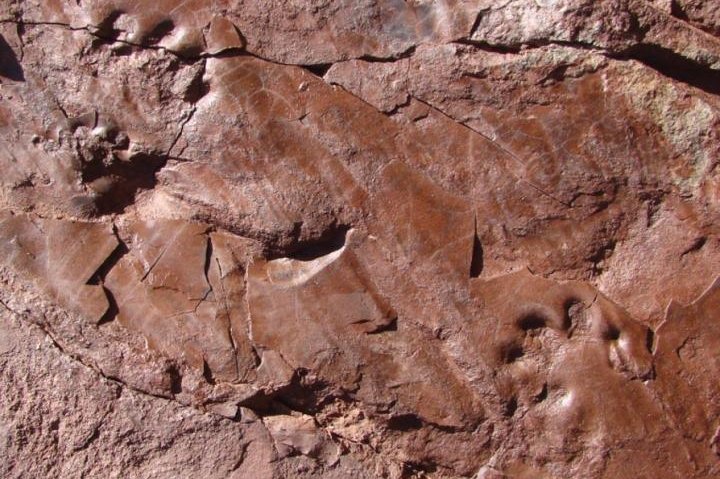Researchers found fossilized footprints in Spain which belong to a group of animals called temnospondyl, the predecessors to modern amphibians. Scientists liken the group to modern salamanders. Photo by Miquel Crusafont/Catalan Institute of Palaeontology
SARROCA DE BELLERA, Spain, Feb. 15 (UPI) -- Researchers in Spain have discovered fossilized footprints, or ichnites, of tetrapod animals dated between 280 and 290 million years old. They are the oldest footprints in Catalonia, a pseudo-autonomous territory in northeastern Spain.
The footprints belong to primitive reptiles and amphibians. Several sets of prints were found among the remains of an ancient fluvial zone. The newly discovered prints belong to a class of animals called temnospondyls, the predecessors of modern amphibian lineages.
"They are a group with a life pattern similar to that of present-day salamanders," Eudald Mujal, a geology researcher at the Autonomous University of Barcelona, said in a press release. "Some species sucked up their food while others hunted actively, in a similar way to today's crocodiles."
Among land once marked by rivers and streams, researchers also found the prints of seymouriamorphs, a group of animals somewhere between temnospondyls and diadectomorphs, egg-laying, reptile-like animals.
Another group of prints was found in an area that was previously open water. These prints belonged to primitive reptiles known as captorhinids. The prints of synapsids, ancestors of modern mammals, were also found.
"We have identified footprints of pelycosaurs, a group of synapsids that could reach four meters in length and which, in some cases, featured a sail along the spine whose function we do not know," added Mujal.
The mix of fossils found in a given area can offer clues as to the ancient geography and climate of the time and place.
"We have realised that, in similar palaeoenvironments, the associations of ichnites, and therefore of tetrapods, change," explained Mujal. "These changes coincide with the different palaeoclimate zones proposed in the models, so the faunal distribution was probably climate-related."
The prints are described in a new paper published in the journal Geological Magazine. All of the animals detailed belong to a superclass known as tetrapods, the first group of animals to develop four limbs and oxygen-breathing lungs.
During the Permian period, lasting from 300 to 250 million years ago, Earth's landmasses were conjoined in a supercontinent called Pangea. The Permian gave way to the Triassic.
The two periods are separated by an extinction much more massive than the disappearance of the dinosaurs -- an extinction that wiped out 90 percent of all animals, including tetrapods.















